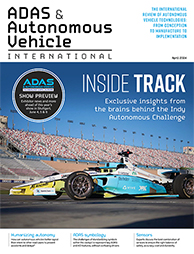Returning in 2022. Dates to be confirmed
Click here to Visit Autonomous Vehicle Test & Development 'Virtual' Live

Returning in 2022. Dates to be confirmed
Click here to Visit Autonomous Vehicle
Test & Development 'Virtual' Live

 Ferenc Pintér, AiSim product manager at AImotive, outlines how the company approaches simulation for AVs and why it’s so crucial. He will talk more about this in his presentation at the Autonomous Vehicle Test & Development Symposium. For more information, up-to-date programs and rates, click
Ferenc Pintér, AiSim product manager at AImotive, outlines how the company approaches simulation for AVs and why it’s so crucial. He will talk more about this in his presentation at the Autonomous Vehicle Test & Development Symposium. For more information, up-to-date programs and rates, click 